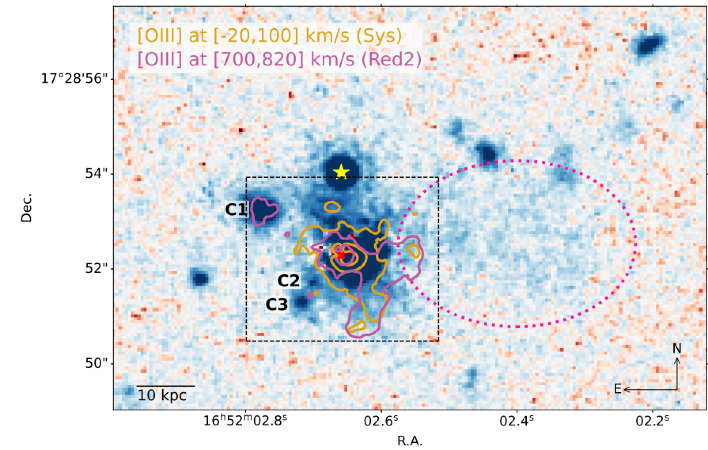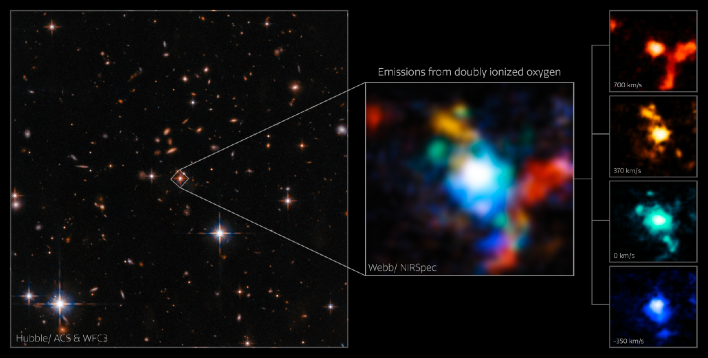Astronomers Brace For Something Dramatic As Galaxies Swirl Around A Monster Black Hole

A team at Johns Hopkins University (JHU) were able to discover "a cluster of galaxies merging together around a rare red quasar within a massive black hole" using old data from the Hubble Space Telescope along with new data from the James Webb Space Telescope (JWST). This new and intriguing view gives a glimpse back in time, and at how galaxies integrated into the modern universe.
Andrey Vayner, a Johns Hopkins postdoctoral fellow and co-author of a paper on the findings, remarked, "We think something dramatic is about to happen to these systems. The galaxy is at this perfect moment in its lifetime, about to transform and look entirely different in a few billion years."
The team received the first data on July 11, 2022, and quickly began trying to make sense of the amazing detailed images. Earlier data from Hubble had already identified a red quasar, with indications of a possible galaxy in transition, but the team was in for a monumental surprise.
"With previous images we thought we saw hints that the galaxy was possibly interacting with other galaxies on the path to merger because their shapes get distorted in the process and we thought we maybe saw that," stated co-principal investigator Nadia L. Zakamska. However, after viewing the new images, Zakamska said she was left thinking, "I have no idea what we're even looking at here, what is all this stuff?"

Image adopting the color scheme highlighting faint features. Negative=Blue Zero=White Positive=Red (Courtesy of JHU)
Webb was able to reveal three galaxies moving at an incredible rate of speed, which suggests a large amount of mass is present. Along with the three galaxies, the team also noted the bright quasar being fueled by what Zakamska calls a "monster" black hole at the center of it all. It is believed to be one of the most powerful ever seen from such a distance.
Zakamska went on to say, "What you see here is only a small subset of what's in the data set. There's just too much going on here so we first highlighted what really is the biggest surprise." She added that each blob seen in the images are "baby galaxies" merging into a "mommy galaxy," and the colors of each indicate different velocities. The team will now begin the long process of trying to figure out the deluge of new data.


